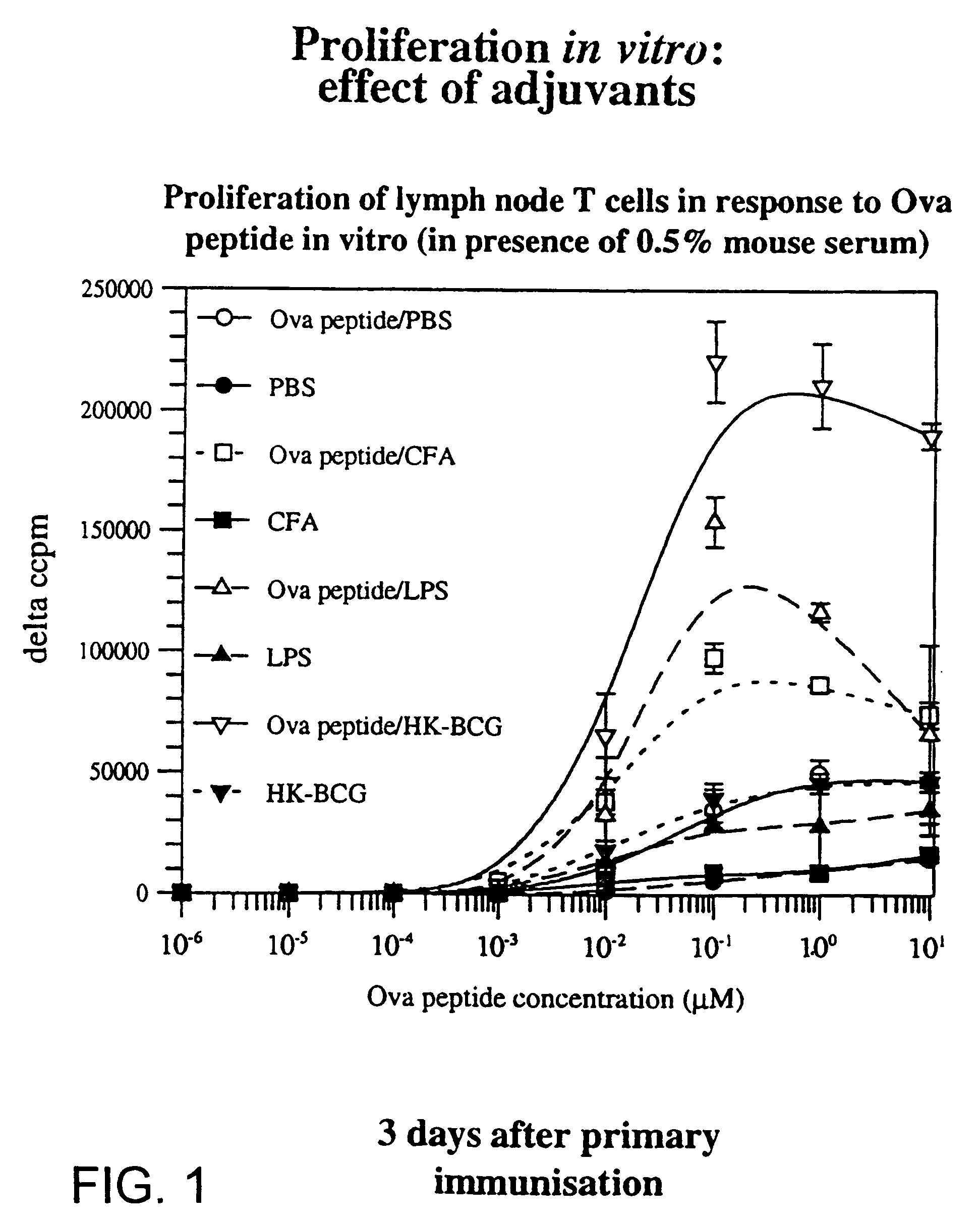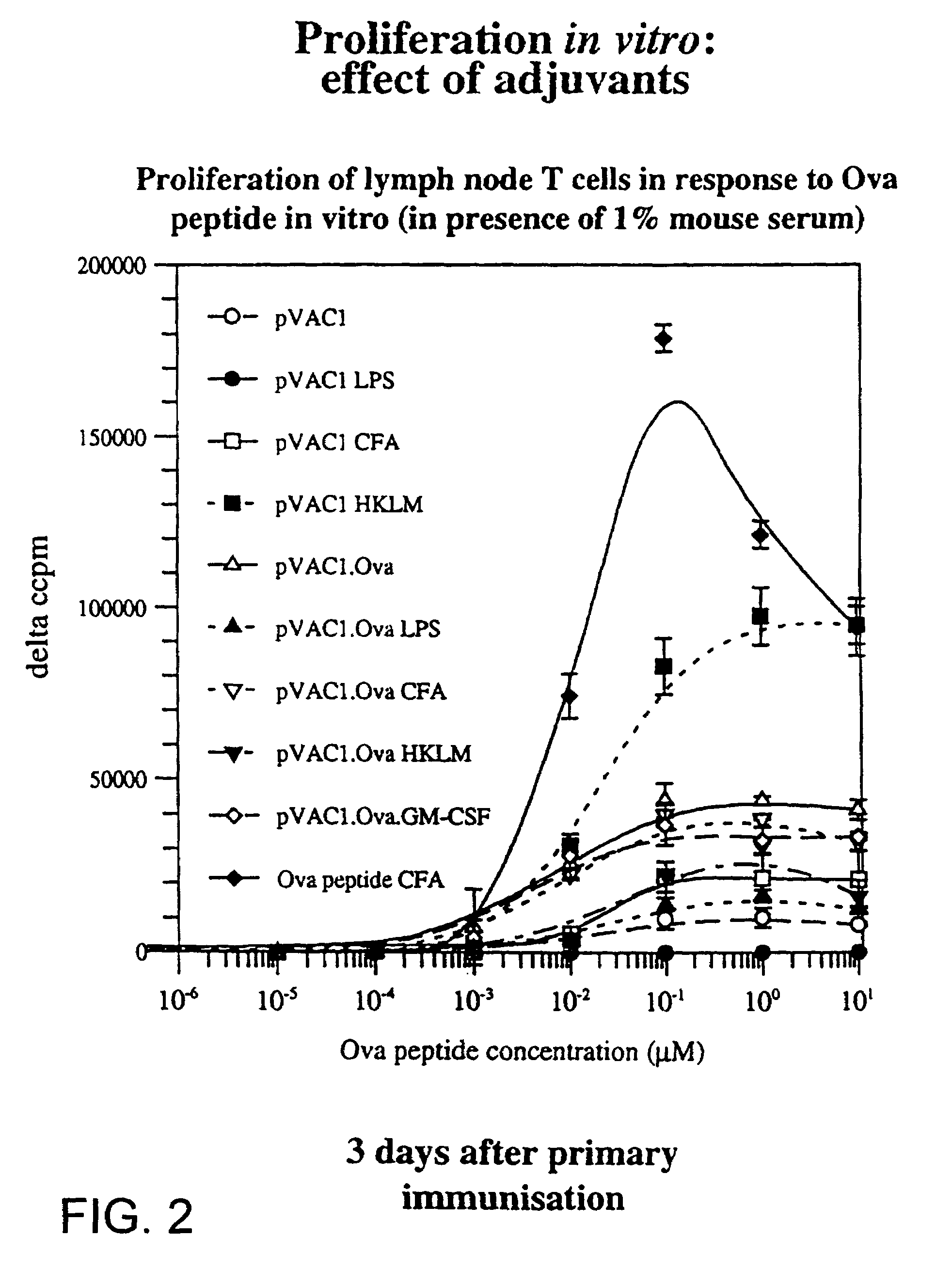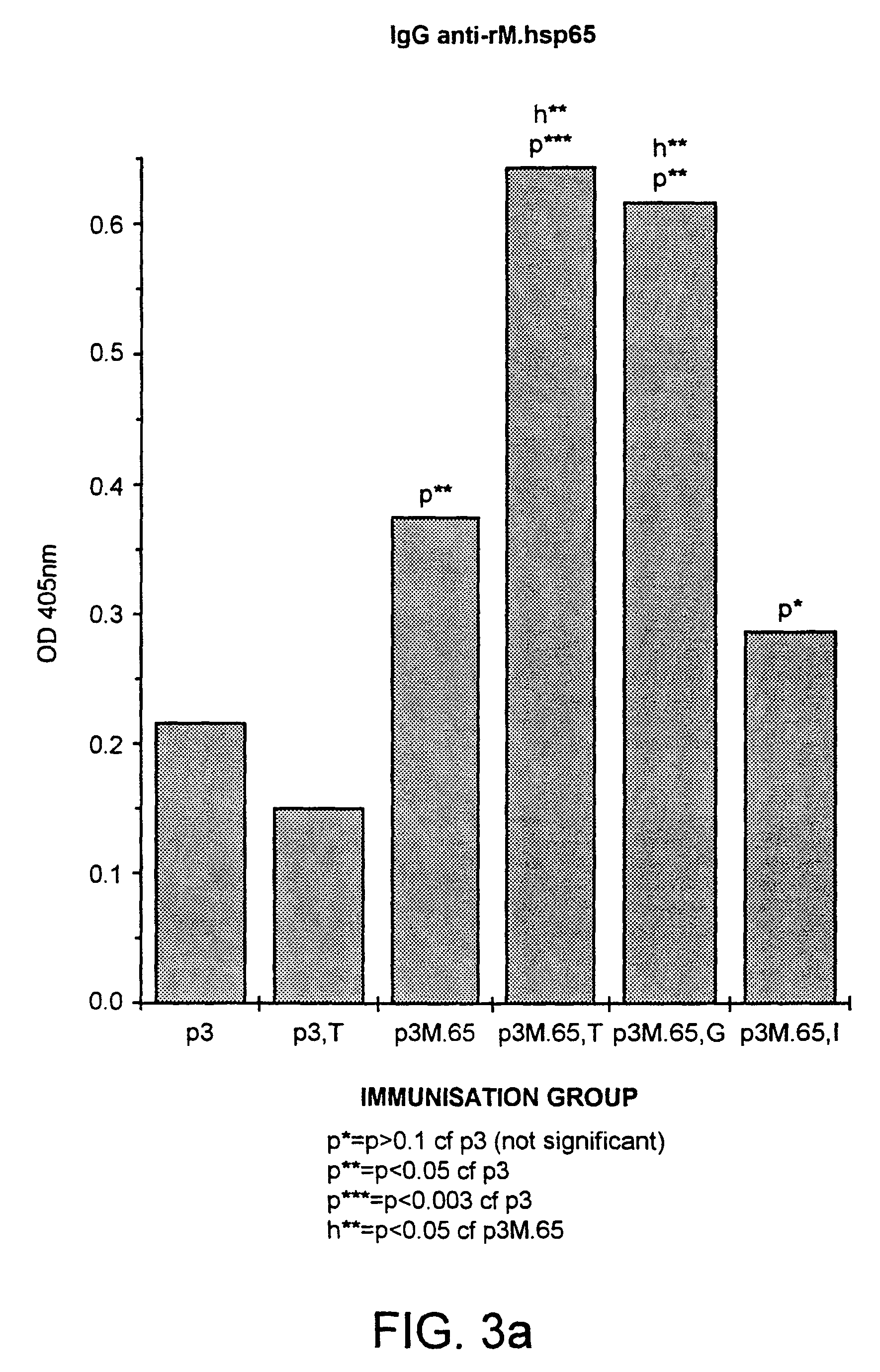Method of DNA vaccination
a technology of dna vaccination and dna, which is applied in the field of dna vaccination improvement, can solve the problems of limited, mixed success, and difficulty in meeting these objects, and achieve the effect of enhancing humoral and cellular responses
- Summary
- Abstract
- Description
- Claims
- Application Information
AI Technical Summary
Benefits of technology
Problems solved by technology
Method used
Image
Examples
example 1
Activity in Conventional Adjuvants in DNA Vaccination Compared to Peptide Immunisation
[0246]Lymphoid cells from TCR-transgenic mice, expressing a receptor specific for an ovalbumin antigen were transferred into normal syngeneic mice. These mice were then immunised subcutaneously with ovalbumin peptide with or without adjuvants. Three days later, regional lymph node cells were removed and their proliferative response to ovalbumin peptide was measured by means of incorporation of tritiated thymidine into DNA. This provides a measure of the degree of specific T-cell priming that occurred in vivo in response to immunisation. Immunisation with ovalbumin peptide alone (◯) resulted in a significant but low level of T-cell priming compared with mock immunisation (●). Bacterial lipopolysaccharide (LPS) (), complete Freunds adjuvant (CFA) (□), and Bacillus Calmette Geurin (HK-BCG) (⊕), all provided significant enhancement of this response. In the absence of an immunising antigen, administrati...
example 2
Tucaresol Enhances the Production of Antigen Specific Antibodies
[0248]The effect of tucaresol on immunisation with a plasmid DNA coding for the mycobacterial heat shock protein 65 (M.hsp65) antigen was analysed, and compared the effect of tucaresol to that of plasmids expressing the cytokines GM-CSF and IFNγ.
[0249]Groups of mice were immunised intramuscularly (i.m.) with 20 μg of a plasmid (p3). Significant amounts of antibodies to M>hsp65 could be detected in sera from p3M.65 immunised mice, but not in the p3 immunised ones (FIG. 3a). The antibody titres were markedly increased when 1 mg of tucaresol was administered subcutaneously simultaneously with the M.hsp plasmid 9p3M.65, T). In contrast, no increase in the specific antibody response was detected in a group of mice immunised with the control plasmid and tucaresol (p3, T), excluding the possibility that a general increase in non-specific cross-reactive antibodies due to the high degree of immuno-potentiation associated with tu...
example 3
Tucaresol Enhances the Specific T-Cell Proliferative Response.
[0254]We next analysed the effect of tucaresol on the proliferative T-cell response induced by vaccination with pDNA expressing the Epstein Barr Virus (EBV) nuclear antigen number 4 (EBNA-4). Groups of mice were immunised i.m. with control plasmid p3 or with the EBNA-4 expressing plasmid (E4) or with E4 plus treatment with tucaresol (E4, T). A minimal proliferative response was detected in the splenocyte cultures from E4 immunised mice when stimulated with the syngeneic EBNA-4 transfected carcinoma line (S6C-E4). Interestingly, a much stronger proliferative response to S6C-E4 was obtained with splenocytes from mice immunised i.m. with the E4 and treated s.c. with tucaresol (FIG. 4). EBNA-4 vaccinia infected stimulators (S6C-VE4) also induced a higher proliferative response than S6C-E4 in the splenocytes from both E4 immunised and the E4, T immunised mice as previously reported. Proliferation was calculated as simulation i...
PUM
| Property | Measurement | Unit |
|---|---|---|
| Time | aaaaa | aaaaa |
| Time | aaaaa | aaaaa |
| Time | aaaaa | aaaaa |
Abstract
Description
Claims
Application Information
 Login to View More
Login to View More - R&D
- Intellectual Property
- Life Sciences
- Materials
- Tech Scout
- Unparalleled Data Quality
- Higher Quality Content
- 60% Fewer Hallucinations
Browse by: Latest US Patents, China's latest patents, Technical Efficacy Thesaurus, Application Domain, Technology Topic, Popular Technical Reports.
© 2025 PatSnap. All rights reserved.Legal|Privacy policy|Modern Slavery Act Transparency Statement|Sitemap|About US| Contact US: help@patsnap.com



